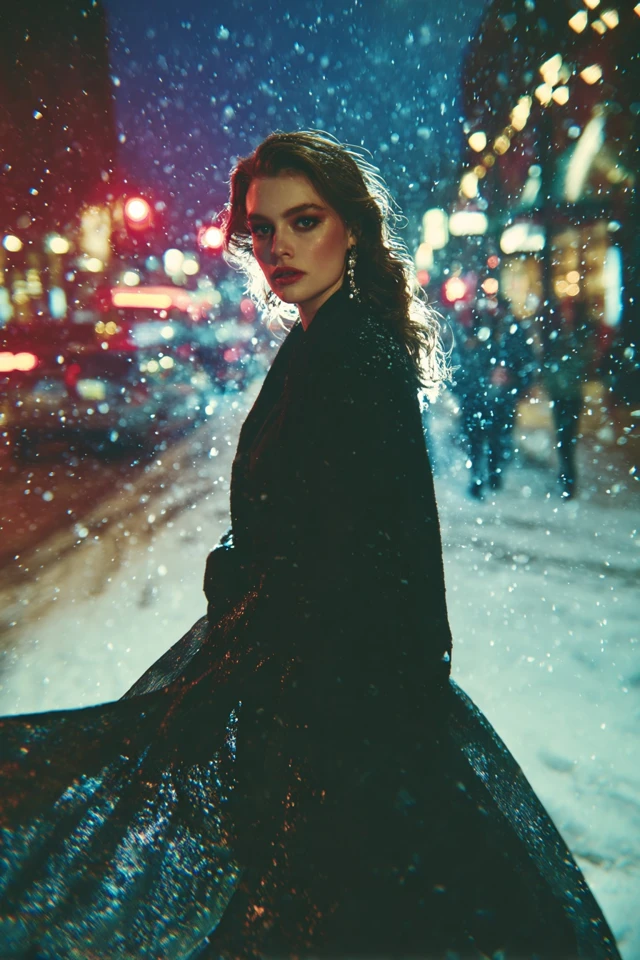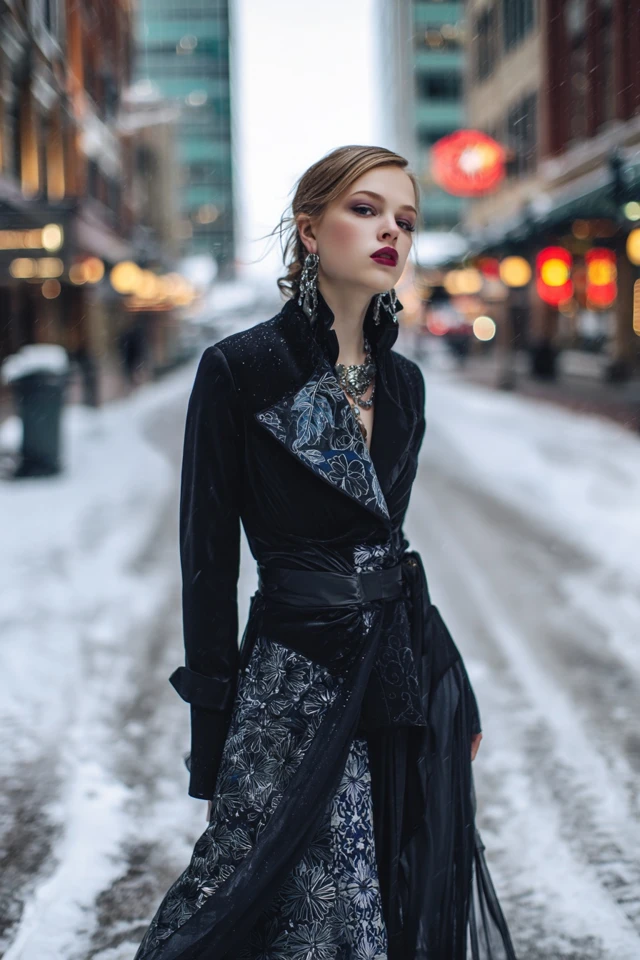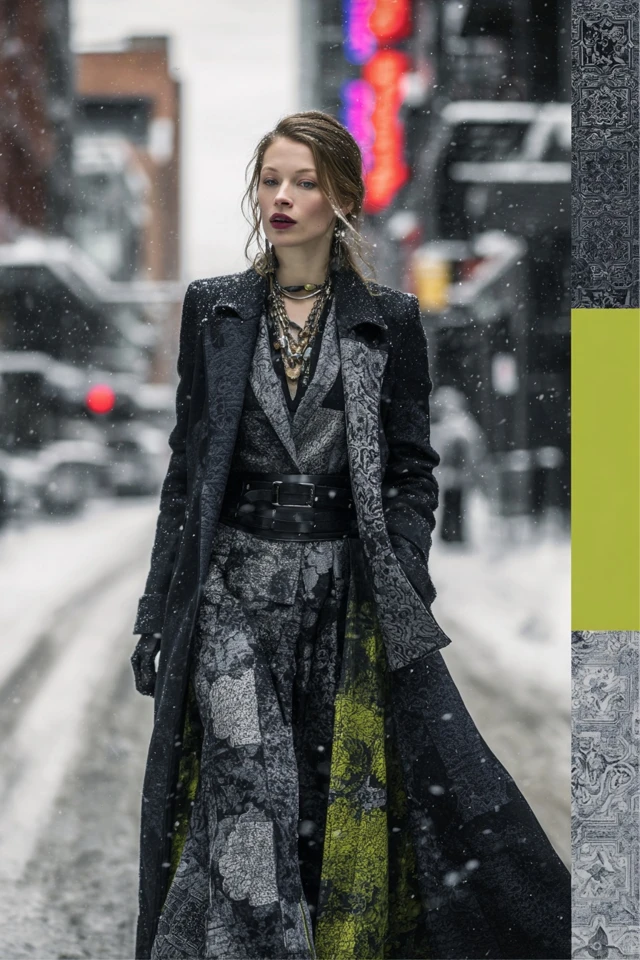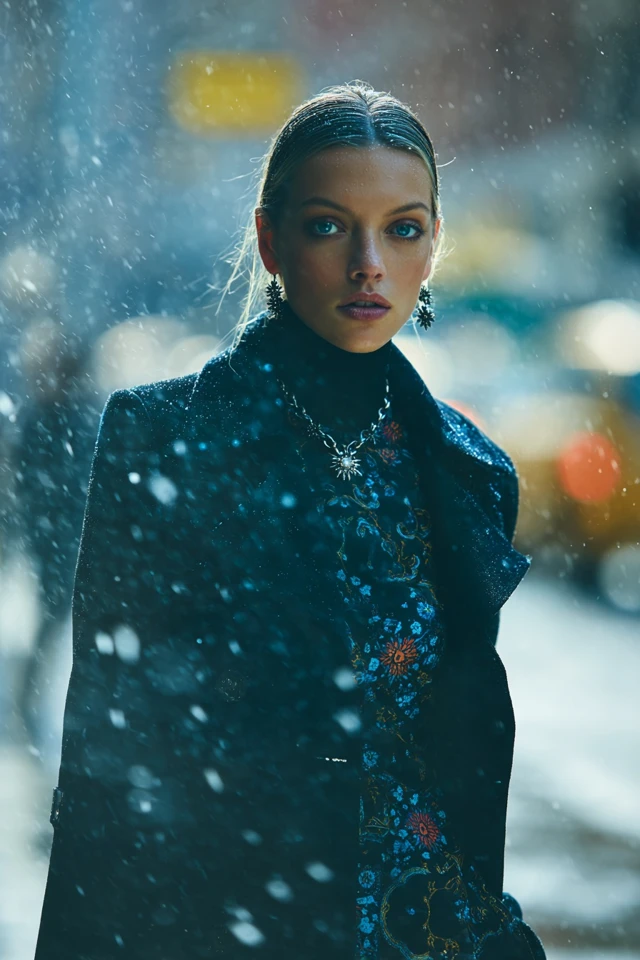Introduction
Last winter, as I prepared for a critical client presentation, I found myself staring into my closet, unsure which outfit would both express professionalism and elevate my confidence against the season’s often-muted tones. Suddenly, I recalled a color palette that had transformed my wardrobe the previous season—a harmonious blend of rich jewel tones, icy neutrals, and unexpected pops of warmth. That moment cemented a realization: winter fashion does not have to sacrifice elegance or vibrancy. Instead, it can be a bold statement of our personality and poise.
Fashion is more than fabric; it’s a visual language that affects how we are perceived and how we carry ourselves. For women, particularly during the colder months, selecting the right colors can fortify self-assurance and communicate strength in subtle yet powerful ways. This is why the concept of an elegant winter statement color palette deserves intentional exploration—it’s not just about what’s trending but how color influences mood, perception, and first impressions in professional and social settings alike.
About the Author and My Trend Boutique
In this post, I draw upon my academic background in fashion design and color psychology, combined with years of practical styling experience, to guide you through a comprehensive, thoughtful approach to curating a winter wardrobe that commands attention with grace. Whether you’re aiming to refresh your look or invest strategically in classic, confidence-enhancing hues, you will find actionable insights and expert recommendations grounded in both science and style.
Foundational Concepts
Understanding an elegant winter statement color palette begins with foundational knowledge of color psychology. This discipline explores how colors influence human emotions and behaviors. For example, deep hues like navy blue evoke trust and authority, while rich burgundies suggest warmth and sophistication. When applied to dressing to impress, these colors work subconsciously to project confidence and competence.
Trend forecasting is another critical concept. Fashion trends often emerge from seasonal colors predicted by industry leaders, influenced by cultural shifts and economic climates. While trends are important for staying relevant, a discerning wardrobe balances current hues with timeless classics to ensure longevity and versatility.
Finally, the principle of dressing to impress goes beyond selecting appealing garments; it involves understanding how your outfit’s colors and styles interact with your environment and audience. For winter, this might mean choosing color palettes that perform well under artificial indoor lighting and in snowy or overcast settings. In my experience, clients who pay careful attention to these details consistently report feeling more empowered and authentic in their personal style decisions.
Picture Gallery




Color Psychology & Emotional Impact
Colors profoundly shape our mood and influence the perceptions of others during first encounters. Research indicates that people make judgments about personality traits within seconds, with color playing a pivotal role. For example, wearing shades of deep teal and forest green often signals stability and calmness, while vibrant ruby reds encourage feelings of passion and energy. In the winter months, when natural light is limited, the impact of color is amplified.
Psychologically, blues can lower stress and promote trustworthiness—ideal for professional winter wardrobes—whereas warmer tones like cinnamon or camel create a cozy yet elegant feel appropriate for social occasions. Employing a palette that balances cool and warm tones can uplift your spirit during dreary days and reinforce your personal brand.
Further studies on color and first impressions show that people wearing harmonious and seasonally appropriate colors are perceived as more approachable and confident. This evidence underscores the value of carefully curated winter palettes that are both stylish and strategically empowering.
Personal Style & Body Type Considerations
While color is undeniably influential, personal style and body type are essential variables in crafting an elegant winter wardrobe. Certain color combinations and fabric textures can either flatter or detract from your natural silhouette. For example, a well-cut emerald green velvet blazer can highlight an hourglass figure’s curves, while a structured minimalist charcoal gray wool coat suits rectangular body types by adding shape through layering.
Complexion also plays a role; cooler skin tones often shine in jewel tones like sapphire and amethyst, while warmer tones glow in burnt orange and golden beige. Consider these body type and complexion pairings as a guide rather than rules:
- Hourglass: Embrace form-fitting shapes; jewel tones such as garnet and royal blue are excellent.
- Rectangle: Use layering and tailored pieces in warm neutrals and rich turquoise to create dimension.
- Apple: Vertical lines in deep plums or charcoal enhance elongation and balance.
- Pear: Opt for lighter tops in ice blues or soft mauves and darker bottoms for contrast.
Here is a quick personal style checklist to identify your preferences:
- Do you tend to choose bold or subtle colors?
- Are you drawn to textured fabrics like velvet or prefer smooth wools?
- Which colors make you feel confident indoors during winter?
- Do you prefer statement accessories or minimalist styling?
Answering these questions can help tailor your winter palette uniquely to your lifestyle and personality.
Current Trends & Timeless Classics
Current winter fashion trends emphasize rich, saturated colors paired with luxe textures. Burnt sienna, deep navy, and iced lilac are dominating runways and boutique collections this season. Designers are blending these hues with timeless classics such as camel, black, and pure white—creating versatile looks that transition from day to night seamlessly.
What sets elegant winter statement palettes apart is their ability to incorporate these trends while remaining wearable year after year. For instance, pairing a camel cashmere turtleneck with a burnt sienna pleated skirt balances trend-consciousness with classic appeal. Investing in high-quality staple pieces in neutral shades lays a foundation on which you can experiment with trending colors each season without overhauling your wardrobe.
Look for details like tailored coats in midnight blue or chocolate brown and scarves in metallic-infused yarns that nod to seasonal updates while honoring timeless designs. This strategic blending maximizes your wardrobe’s fashion longevity and impact.
Practical Tips & Recommendations
When building your winter wardrobe around an elegant statement palette, consider these professional tips:
- Shopping: Prioritize quality fabrics—such as wool, cashmere, and velvet—that hold vibrant colors well and provide lasting comfort.
- Wardrobe maintenance: Store seasonal pieces in breathable garment bags and use proper hangers to maintain shape, ensuring colors look fresh when seasons change.
- Layering: Combine hues strategically; for example, a soft gray base layer can make a bold crimson coat pop while preserving balance.
- Accessories: Use jewel-tone scarves, leather gloves, or statement jewelry to introduce subtle pops of your palette in smaller doses without overwhelming your ensemble.
- Color combos: Experiment with triadic schemes like icy blue, deep plum, and warm taupe to create visual interest and depth.
For suggested visual aids, consider creating swatches featuring these colors: deep burgundy wool blazer, sage green knit sweater, charcoal tailored coat, all of which enhance mood and perception during winter.
For more detailed guides, readers may explore resources such as the Pantone Color Institute’s seasonal color reports and color psychology studies available on reputable fashion and psychology websites.
FAQs
- Q: How do I find my signature winter color without overwhelming my wardrobe?
A: Start with neutrals like charcoal or camel and gradually add one or two statement colors that complement your skin tone. Use accessories to test new shades before committing to larger garments. - Q: Can I update my wardrobe on a budget while staying trendy?
A: Yes. Focus on key investment pieces in classic cuts and colors, then refresh with seasonal scarves, gloves, or tops in trending hues. - Q: What are essential colors for a winter capsule wardrobe?
A: Incorporate deep navy, charcoal gray, rich burgundy, and a soft neutral such as cream or camel for maximum versatility. - Q: How can color psychology boost my confidence in professional settings?
A: Wearing colors associated with authority (like navy) or approachability (like soft blue) can positively influence both how you feel and how colleagues perceive you. - Q: Are there fabric colors to avoid in winter for an elegant look?
A: Extremely bright neon shades may clash with winter’s subdued atmosphere and can detract from sophistication. Stick to richer, muted tones for timeless elegance.
Conclusion
Elegance in winter dressing is an artful balance of color psychology, personal style, and timeless sophistication. By understanding how colors influence mood and perception, and strategically selecting hues that flatter your skin tone and body type, you can cultivate a winter wardrobe that not only looks impeccable but also empowers you from within.
Remember that fashion is ultimately about self-expression. Don’t hesitate to experiment with shades, textures, and combinations that resonate with your unique personality. The right elegant statement palette will become an extension of your confidence and style narrative throughout the season and beyond.
I invite you to share your favorite winter color combinations in the comments, ask questions, and subscribe for more insights on fashion, style, and color psychology. Together, we can redefine winter elegance, one shade at a time.


